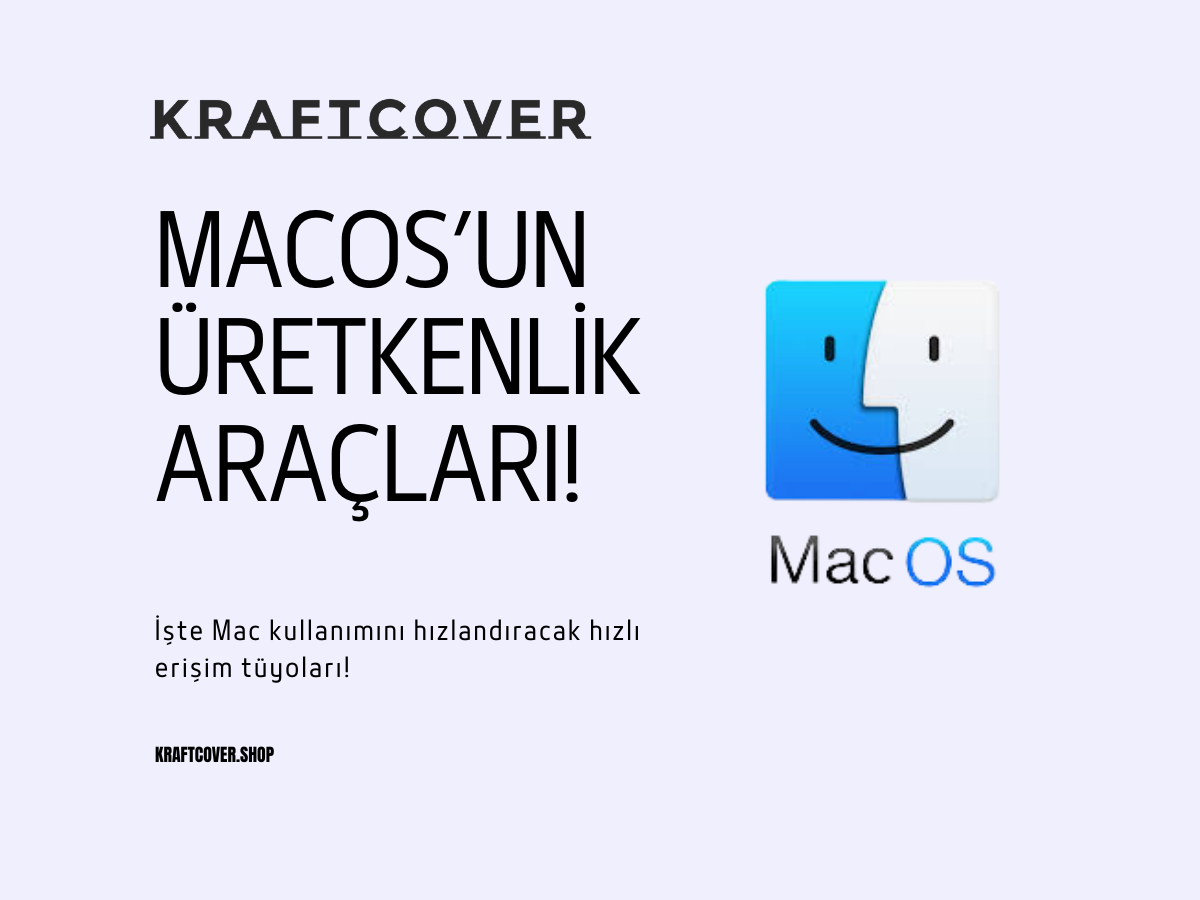MacBook’unuzun performansını yıllar boyunca yüksek tutmak için rutin bakımın ötesine geçmek gerekir. Aşağıdaki yöntemler, uzun vadede performans kaybını önlemeye yönelik daha derin ve teknik optimizasyonları kapsar.
1. macOS’in Swap Alanını Optimize Etmek
Zamanla, yoğun bellek kullanımı nedeniyle MacBook’lar SSD’yi swap alanı olarak kullanmaya başlar. Bu işlem, SSD üzerinde aşırı yazma işlemleri yaparak performans kaybına ve SSD’nin ömrünün kısalmasına neden olabilir. Swap kullanımını azaltmak ve optimize etmek, uzun süreli performansı korumanın kritik bir yoludur.
Derinlemesine Adımlar:- Swap Kullanımını İzleme: Activity Monitor > Memory sekmesinden swap kullanımını izleyin. Sürekli yüksek swap kullanımı, cihazınızın belleğinin yetersiz kaldığı anlamına gelir.
- Uygulama Yönetimi: Yüksek bellek tüketen uygulamaları azaltın veya kapatın. Ayrıca, gereksiz arka plan işlemlerini devre dışı bırakmak swap kullanımını düşürecektir.
- Bellek Ekleyin (iMac veya Mac Mini için): Eğer fiziksel olarak mümkündür, cihazınıza daha fazla RAM eklemek swap ihtiyacını azaltacaktır.
SSD’nin ömrünü uzatır ve uzun vadede MacBook’unuzun hızını korur.
Ürün Önerisi: MacBook’unuzun bellek yönetimini optimize etmek için USB-C'den HDMI'a Dönüştürücü gibi bir aksesuar kullanarak, harici bir monitörle çoklu görevleri daha rahat bir şekilde yönetebilirsiniz.
2. Gelişmiş Termal Yönetim ile Isı Kontrolü
MacBook’lar, aşırı ısınmayı önlemek için tasarlanmışlardır, ancak yoğun kullanım altında termal boğulma (thermal throttling) performansı düşürebilir. Gelişmiş termal yönetim teknikleri ile cihazınızın sıcaklık seviyelerini kontrol etmek, hem işlemci ömrünü uzatır hem de uzun vadeli performansı korur.
Derinlemesine Adımlar:- Fan Hızını Manuel Ayarlayın: Macs Fan Control gibi bir yazılım kullanarak fan hızlarını manuel olarak ayarlayın. Bu, özellikle video düzenleme veya oyun oynama gibi yoğun görevlerde performansı artırabilir.
- Soğutma Padleri Kullanın: MacBook’unuzu serin tutmak için harici soğutma padleri kullanabilirsiniz. Bu, termal boğulmayı önleyerek cihazın performansını korur.
- İç Temizlik: Düzenli aralıklarla MacBook’unuzu açarak içindeki tozu temizleyin. Bu, fanların daha verimli çalışmasını sağlar ve soğutmayı optimize eder.
Termal boğulmayı önleyerek işlemci hızını korur ve cihazın genel performansını artırır.
3. Dosya Sistemini ve Disk Bütünlüğünü Düzenli Olarak Kontrol Edin
Zamanla, dosya sistemi hataları veya disk bütünlüğündeki bozulmalar, MacBook’unuzun yavaşlamasına neden olabilir. Bu nedenle, düzenli olarak disk bakımını yapmak, olası hataları önceden tespit edip düzeltmek için gereklidir.
Derinlemesine Adımlar:- Disk İlk Yardım’ı Kullan: Disk Utility > First Aid aracını kullanarak diskinizin sağlığını düzenli olarak kontrol edin. Bu araç, dosya sistemi hatalarını tarar ve düzeltir.
- APFS Snapshots ile Geri Yükleme: APFS ile gelen snapshot (anlık görüntü) özelliklerini kullanarak, sistemin geri alınabilir bir anlık görüntüsünü kaydedin. Bu, herhangi bir sistem arızası durumunda performans kaybı yaşamadan önceki durumunuza geri dönmenizi sağlar.
Disk hatalarını önceden tespit eder ve düzeltir, böylece veri kaybı ve performans düşüşü riskini azaltır.
Ürün Önerisi: MacBook’unuzun sağlığını korumak için düzenli yedeklemeler yapmayı unutmayın. Bu süreçte, verilerinizi harici bir sürücüye aktararak depolama alanınızı yönetmek için Alüminyum MacBook Standı kullanabilirsiniz.
4. NVRAM ve SMC’yi Sıfırlayın
MacBook’lar zamanla farklı ayarları biriktirir ve bu ayarlar bazen performans sorunlarına neden olabilir. NVRAM (Non-Volatile Random Access Memory) ve SMC (System Management Controller) sıfırlaması, bu tür sorunları çözmenin etkili bir yoludur.
Derinlemesine Adımlar:-
NVRAM Sıfırlama: Mac’inizi kapatın, ardından açarken
Option + Command + P + Rtuşlarına yaklaşık 20 saniye basılı tutun. Bu işlem, ses seviyesi, ekran çözünürlüğü ve diğer ayarları sıfırlayacaktır. -
SMC Sıfırlama: MacBook’unuzu kapatın, ardından
Shift + Control + Optiontuşlarına ve aynı anda güç düğmesine 10 saniye boyunca basılı tutun, sonra serbest bırakıp cihazınızı tekrar açın.
Performans düşüşüne neden olabilecek sistem ayarlarını sıfırlar ve MacBook’unuzu fabrika ayarlarına geri döndürür.
5. Periyodik Donanım Bakımı ve Bileşen Güncellemeleri
MacBook’unuzun uzun ömürlü olması için donanım bileşenlerinin bakımını periyodik olarak yapmak önemlidir. Bu, özellikle yoğun kullanımda bileşenlerin aşınmasını ve yıpranmasını azaltır.
Derinlemesine Adımlar:- Batarya Sağlığını Kontrol Edin: Apple Menü > Sistem Tercihleri > Pil > Pil Sağlığı adımlarını izleyin. Sağlığı bozulmuş bir batarya, MacBook’unuzun performansını düşürebilir.
- SSD’yi Düzenli Olarak Yedekleyin: Veri kaybını önlemek ve performansı artırmak için Time Machine veya üçüncü taraf yedekleme yazılımlarını kullanarak SSD’nizi yedekleyin.
- Gelişmiş Bellek Yönetimi: Bellek yetersizliği nedeniyle yavaşlama yaşanmaması için RAM kullanımını optimize eden yazılımlar kullanın.
Donanımın uzun vadede sorunsuz çalışmasını sağlar, cihazın performansını ve ömrünü uzatır.
Bu öneriler, diğer içeriklerden farklı olarak, daha derinlemesine teknik bilgilere dayanıyor ve uzun süreli kullanımda MacBook’unuzu en iyi şekilde korumanızı sağlıyor. MacBook’unuzun performansını yıllar boyunca yüksek tutmak için bu stratejileri uygulayabilirsiniz.




